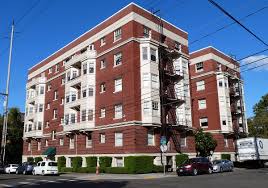Today’s Wall Street Journal includes this probing article on condominium maintenance and governance. Although the article addresses proposed changes to Florida law, the issues are similar in Ohio and Kentucky.
The issue raised by the collapse and the events leading up to it, and issues of condominium finance and governance, are highlighted by the article. These are important issues for condominium owners and buyers to carefully consider.
We are asked to review condominium documents
Frequently, we are asked to review condominium documents for a prospective buyer. The task sounds simple enough, and, of course, our buyer already wants to buy. And not to be a negative Nancy, but does our client really understand what he is getting into?
So, a small diversion on that topic.
We many times after an owner is in a condominium — sometimes years after the closing — receive a call from an owner who is really unhappy with communal ownership that condominiums represent. They don’t like the standard to which the common areas are maintained. They don’t want to follow the rules set by the association. They won’t like the dues assessed. They don’t like the conduct of their neighbors. Buyers should therefore appreciate that condominium ownership — be it high-rise, apartment style, or townhouse style — is fundamentally legally different that single family home ownership.
Contents of condominium documents
In Ohio, Condominiums are “regulated” under R.C. § 5311, which contains some minimum requirements of condominium declarations. But, mostly, condominium declarations are a voluminous contract by and among the unit owners. The declaration or covenants typically contain these major categories of contractual agreements:
- Division of the real property (land and buildings) among:
- Unit, which is usually the three-dimensional space defined by the interior surfaces of the perimeter walls of the area the owner is buyer.
- Common areas, which is everything that is not a “unit.” Importantly, for this article, this is the foundation, exterior walls, parking garages and parking lots, roof, windows, exterior doors, patios, hallways, lobbies, etc. Again, anything that is not a unit itself.
- Limited common areas, which are portions of the condominium property that are common areas, but are limited in their use to a specific unit owner or fewer than all of the unit owners.
- Limitations on use of the Common Areas, and in some cases the units themselves. For example, parking three-axle trucks, leaving child toys or erecting a basketball hoop might be prohibited.
- The creation of the condominium association, which typically owns no property itself but is charged with maintaining the common areas.
- Assessment of condominium dues in an amount set from time to time by the association whereby, primarily, the association maintains the common areas.
- The right in the condominium association Board to set reasonable rules.
- The right of the condominium association Board to place a lien against a unit and foreclose on a unit for unpaid assessments.
- Attorney fee shifting from association to unit owner. What this shorthand means is that if a unit owner gets into litigation with the association and loses, he must pay the attorneys fees of the association. This is a powerful tool of the association in scrapes with the unit owner.
Notably, one of the things that is not usually in condominium documents is a minimum required standard of maintenance of common areas. So, if an owner does not like how a parking lot or roof is maintained, the cycle on which garage doors are replaced or that exterior painting is done, the unit owner can either run for the Board himself (and assemble a majority) to make better decisions or he is largely “out of luck” on that issue.
What is a unit owner buying?
So, when a unit owner buys a condominium property, what he gets at the closing is a deed for (a) the unit and (b) a percentage ownership interest in all of the common areas of the development. This is means if it is a multi-unit development, he owns a percentage interest in every roof, every foundation, every exterior wall, etc. And therefore he has a partial duty to pay to maintain all such areas. Further, that purchase is subject to the contractual agreements set forth in the Declaration.
This is a pretty big gulp with a lot of unknowns when you think about it. In other words, the buyer better read the contract, better like his neighbors, better understand the physical condition of the entire development and better understand the finances of the association (more on that below).
So, how does this intersect with the Miami disaster?
The news articles have hinted at, but have not stated directly, that some owners in the building understood that poor long-term maintenance meant problems for the building, and that over the years some favored higher dues and a better standard of maintenance and others were more frugal and thought the maintenance could wait. This would be typical push and pull between a condominium association and its members.
Well we now know without a doubt which side of that debate was correct — the building needed higher assessments and a much higher standard of maintenance.
Condition of common areas is important
But condominium buyers usually — in my experience — look primarily at the unit‘s condition in determining whether to buy, and not the condition of the building or entire condominium complex. I have even had condominium unit buyers hire inspectors to inspect the unit, and I wonder: Why? The condition of the entirety of the building(s) is just as important.
Condition of association’s finances is important
And offsetting balances set forth in the Association’s reserves are critical for deferred maintenance issues, lest the new owners pay for maintenance costs that should have been set aside by the current and former owners.
What questions should a condo buyer ask?
So, in addition to understanding the condition of the unit being purchased, a buyer should ask two critical questions:
- If I were buying this entire building as an investment, for example, is it in tip-top shape or are there significant deferred maintenance items? And in the case of the Miami building, are there red flags that would indicate significant structural issues that could cause physical harm or massive special assessments to fix long-lingering problems?
- Has the association set aside sufficient reserves to address routine and deferred maintenance issues, or have successive Boards left a mess for future owners?
It’s complicated
The long and short of condominium purchaser and condominium ownership is: It’s complicated, and to really know what you are buying or “where things stand” with your condominium, one really needs (a) a full understanding of the condition of the common areas in addition to the condition of the unit, and (b) a full understanding of the association’s finances — especially its reserves for repairs — to really understanding what you are buying and what you own.
Contact Chris Finney (513.943.6655), Eli Krafte-Jacobs (513.797-2853 or Jennings Kleeman (513-797-2858) to discuss condominium purchase issues or owner/association disputes.



